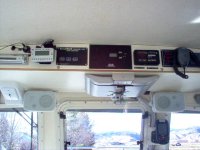flapbreaker
New member
- Joined
- Jan 26, 2005
- Messages
- 878
- Reaction score
- 0
- C Dory Year
- 2006
- C Dory Model
- 22 Cruiser
- Vessel Name
- Playin' Hooky
I don't see this talked about much but was wondering if anyone has any experience with cell signal amplifier/repeater like the digital antenna DA4000 or DA4000MR. I lose cell service at about 15 miles offshore and would like to extend my service out to about 40 miles. According to digital antenna you can extend your signal upto 50 miles if the right conditions exist. I'd probably go with an 8' cell antenna.
http://www.digitalantenna.com/prods/cel ... ifier.html
http://www.digitalantenna.com/prods/cel ... ifier.html

